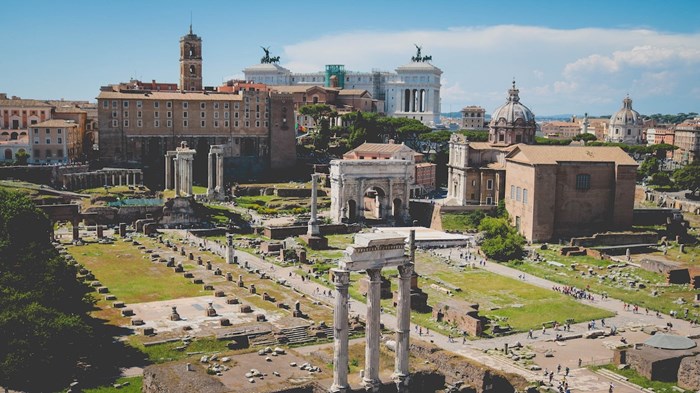Paul, Slavery, and Today

By Heather Hart
I have stood in more DMV lines than I care to count. We’ve moved 3 times in the past 4 years, so I am familiar with many peculiarities of driving in America. In the northern suburbs of Chicago, the highway is hulking, and unspoken rules govern appropriate lane usage. Alternatively, in Florida the Wild West reigns with semis barreling down any lane, and The Season, when snowbirds arrive and traffic multiplies exponentially. If I wrote letters to friends in each of these states offering insight for improving highway usage, the letters would speak to local situations and particular assumptions about what “normal” driving should look like. If my letters were read across the globe, rural drivers may wonder why I never mention tractors. In England, my references to driving on the right side of the road would be out of place. If these were read 2,000 years from now to navigate transportation issues, we would have considerable difficulty. Applying letters from 2021 to situations in 4021 is not cut and paste. I have no knowledge of the specific issues arising that far into the future and I’ve been socialized into a particular culture where I may not fully perceive the conditions around me or perhaps, I don’t speak to issues in the way future drivers want to hear about them. However, the concerns that I bring up in my letters will tell you about my foundation by what I value and what I critique. That foundation can point us forward.
The apostle Paul wrote letters to first century Christians explaining what it meant for them to move forward and follow Jesus. We read his letters and attempt to live out what it means to follow Jesus today. Yet, we perceive some gaping holes in his teaching. [1] One of the most significant holes relates to slavery: Paul never directly tells Christian masters to free enslaved people. Today, slavery is rightly condemned. What do we do with his lack of condemnation?
Instead of looking through our 2021 lens, we need to let Paul speak to us through his own lens.[2] He sees the sprawl of an empire, but his task is to preach an alternate foundation: Jesus. Paul represents Jesus who stands completely outside of the legal and economic systems of Rome.[3] Jesus is Lord, Caesar is not. This liberation brings transformation. Jesus renews minds, reconciles relationships, and initiates a new kingdom.[4] This is Paul’s message.
When Paul writes to Philemon about the enslaved Onesimus, we see an assertion of Jesus’ transformative power. Paul’s audience grew up in Greco-Roman thought, based on writers like Aristotle. This mindset viewed the enslaved as mere tools, albeit living ones, and saw subordination as both unavoidable and fitting.[5] The relationship between master and the enslaved was maintained through the continued fear of punishment, discipline, execution, and the ability for masters to destroy any family relationships forged by the enslaved.[6] It is against this cultural backdrop that Paul writes.
We don’t know what drove these two men apart. However, for Paul, Jesus’ transformation can reconcile Philemon and Onesimus, reversing their separation and hostility.[7] Fear should no longer separate them. Jesus’ transformation also undoes their power dynamic, creating siblings.[8] They are no longer inherent unequals. Roman assumptions are turned inside out in Jesus. Both parties are asked to do something vulnerable. Onesimus voluntarily returns to a damaged relationship where he is powerless. However, this permits Onesimus to be submissive, the cultural expectation for “good” enslaved people.[9] Philemon must voluntarily welcome Onesimus as a brother.[10] This is the opposite of what Roman culture expects a master to do. As the one with power, Philemon is charged to change the relationship dynamic and elevate Onesimus.[11] Paul subverts Roman status, power, and hierarchy.[12] Jesus transforms through love, reconciliation, and community, beginning not in a legal courtroom but in a small house church.[13]
Jesus initiates transformation in his followers. It bubbles up in personal relationships for those with ears to hear.[14] It flows through the church. It bursts the empires of the world. Paul critiques the power systems of his day, even if it is not in the same manner that we would critique it. Paul speaks with clarity in his culture and we can see Christ, his foundation. This is how we follow Jesus forward.
[1] Scot McKnight, The Letter to Philemon, The New international commentary on the New Testament (Grand Rapids, Michigan: William B. Eerdmans Publishing Company, 2017), 26.
[2] Ibid.
[3] Ibid., 10–11.
[4] Ibid., 33.
[5] Ibid., 12.
[6] Ibid., 20.
[7] Ibid., 89.
[8] Bruce W. Longenecker and Todd D. Still, Thinking through Paul: An Introduction to His Life, Letters, and Theology (Grand Rapids, MI: Zondervan, 2014), 215–216.
[9] Cynthia Long Westfall, Paul and Gender: Reclaiming the Apostle’s Vision for Men and Women in Christ (Grand Rapids, Michigan: Baker Academic, a division of Baker Publishing Group, 2016), 165.
[10] Lloyd A. Lewis, “Philemon,” in True to Our Native Land: An African American New Testament Commentary, eds. Brian K. Blount et al., (Minneapolis, MN: Fortress Press, 2007), 442–443.
[11] Westfall, Paul and Gender, 165.
[12] Ibid., 162.
[13] McKnight, The Letter to Philemon, 44.
[14] Lewis, "Philemon," 443.
Jesus Creed is a part of CT's
Blog Forum. Support the work of CT.
Subscribe and get one year free.
The views of the blogger do not necessarily reflect those of Christianity Today.


















